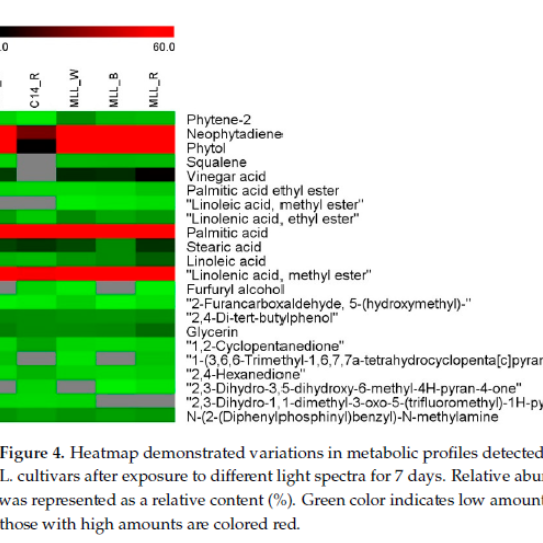Bioactive Compounds Produced in Leaves of Mulberry (Morus alba L.) Transplants under Modified Environments of Root and Aerial Zones
Highlight: Even though stem cuttings, leaf cuttings, root cuttings, and single-node cuttings are widely used to propagate a wide range of perennials, deciduous shrubs, and some woody plants, the mulberry propagation in Myanmar generally uses softwood stem cuttings. The mulberry plants are harvested intensively under the tropical climate, resulting in exhaustion and renewed plantation requirement. This present research demonstrated an alternative conceptualization of mulberry transplants production from single-node cutting. Two major advantages might be exemplified. First, our established system consisted of mulberry transplants derived from single-node cuttings grown in a vermiculite-based substrate, supplied with adequate and proper nutrient solution. This applied system generated qualified mulberry transplants with uniformity and vigorous growth, free from latent contamination of diseases or insects. The propagating period using the V-based substrate (90 days) was shorter than those produced by conventional stem cutting (more than 8 months). It is also suggested that the mulberry transplants established in this present study potentially facilitate the industrial production of clean stock plants and logistic handling systems. These stock plants can be efficiently reprocessed and can overcome the previous limitation of production space, season, labor, etc.
In addition to its advantage of propagation efficiency, these indoor transplants can be utilized as sources of useful compounds. Although mulberry leaf tea is used as a source of an excellently refreshing and nourishing drink due to its natural taste, aroma, and color, the additional benefits of active ingredients found especially in mulberry are attractive for health products. In this study, we demonstrated a new concept to use mulberry leaves as alternative sources of functional ingredients for humans, not just for herb tea. High-quality mulberry leaves produced indoors can support industrial production with good manufacturing practice (GMP) to serve the commercial demands for edible fiber, and nutraceutical compounds in food, feed, and medicinal industries. The properties of mulberry leaves in terms of biomass and the production of bioactive compounds can be modified using physical elicitors such as light intensity and wavelength. In our study, light intensity and short-period treatment of specific LED light spectra applied to the aerial zone of mulberry transplants could significantly induce different nutritional and nutraceutical compounds produced in leaves. This might open the opportunity to precisely design the raw material properties to meet the requirements of consumers. However, the mulberry cultivar plays a key important role in the variated responses to the PFAL system and light elicitation. According to the overall parameters gained from our study, we suggested that the MLL cultivar performed as an elite candidate when compared to MML and C14 cultivars. The system established in this study can enable large-scale and year-round production of qualified raw materials. It is also suitable for up-scaled industrialization under controllable or modified conditions that support the precision production of each specific purpose.
Researcher Name: Aye Nwe Win, Darunmas Sankhuan, Watcharra Chintakovid and Kanyaratt Supaibulwatana
Years of execution: 2021-2022
Funder Name: The research was partly supported by a CIF grant, Faculty of Science, Mahidol University and partially funded by the Office of National Higher Education Science Research and Innovation Policy Council by the “Program Management Unit for National Competitiveness Enhancement (PMU-C)” to K.S. (PI), Contract number C10F640135.
Objectives: To investigate the growth performances of mulberry transplants produced in indoor cultivation with modified micro-environments surrounding the root and aerial zones. Small single-node cuttings were used in this study in order to reduce the wastage of softwood stem cuttings in conventional mulberry propagation and were grown in different culture systems to produce a uniformity of mulberry mini-transplants. A combination of culture system and controllable artificial environments aimed to establish an alternative plant-factory process of mulberry transplantation that has potential to be applied to the industrial production of bioactive components from mulberry stock plants.
Abstract
Different shoot/root micro-environments were investigated for growth performances and nutraceutical compounds in leaves of mulberry (Morus alba L.) transplants. Single-node segments were taken from seedling-grown pots of three cultivars: Myanmar large leaf (MLL), Myanmar medium leaf (MML), and C14. Transplant production was compared in soil, vermiculite (V), or the dynamic root floating technique (DRFT). The highest survival percentage of the transplants was obtained from V-system, and MLL showed a higher shoot/root formation over two tested cultivars. The MLL transplants grown in V-system under white LED light (445 and 554 nm) at 200 μmol·m−2·s−1 gave a fresh weight with superior qualified transplants compared to other treatments. The bioactive compounds in leaves of MLL, MML, and C14 were analyzed using GC–MS after incubation with different LED spectra. Ethanol extracts of the leaves revealed that more than 50% of the bioactive compounds were fatty acids and conjugates and varied according to spectra and cultivar. Blue LED light (445 nm) induced the production of total phenolics, whereas white LED light favored the production of total proteins, soluble sugar, and biomass. The modified environments at the root and aerial zones significantly influenced the growth and biochemical parameters of transplants, and this applied technique can elevate useful functional ingredients of mulberry leaves.


